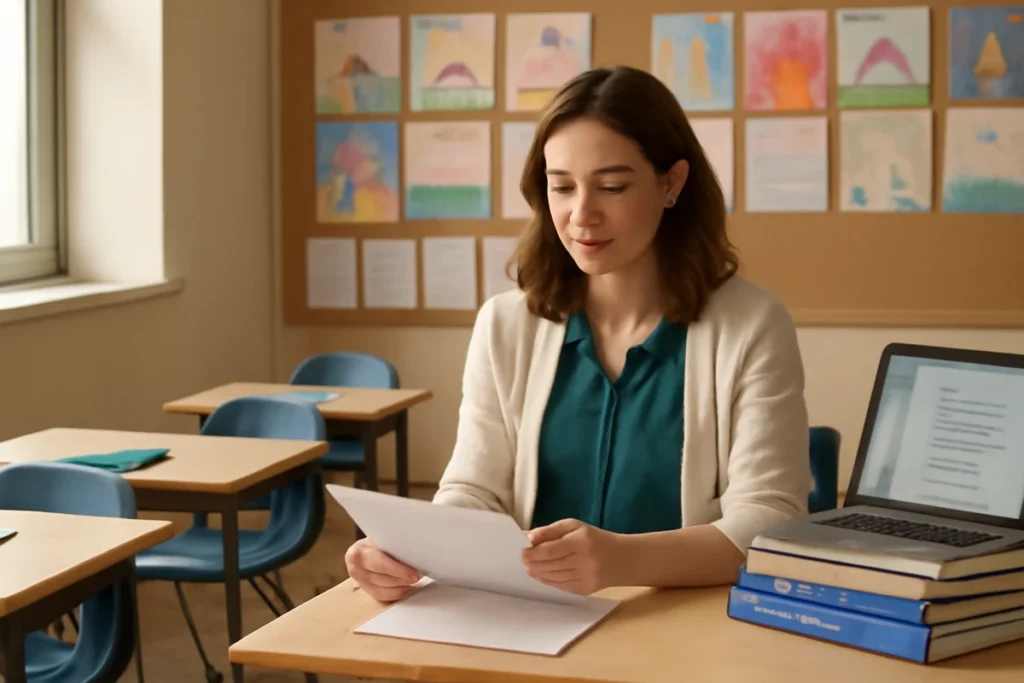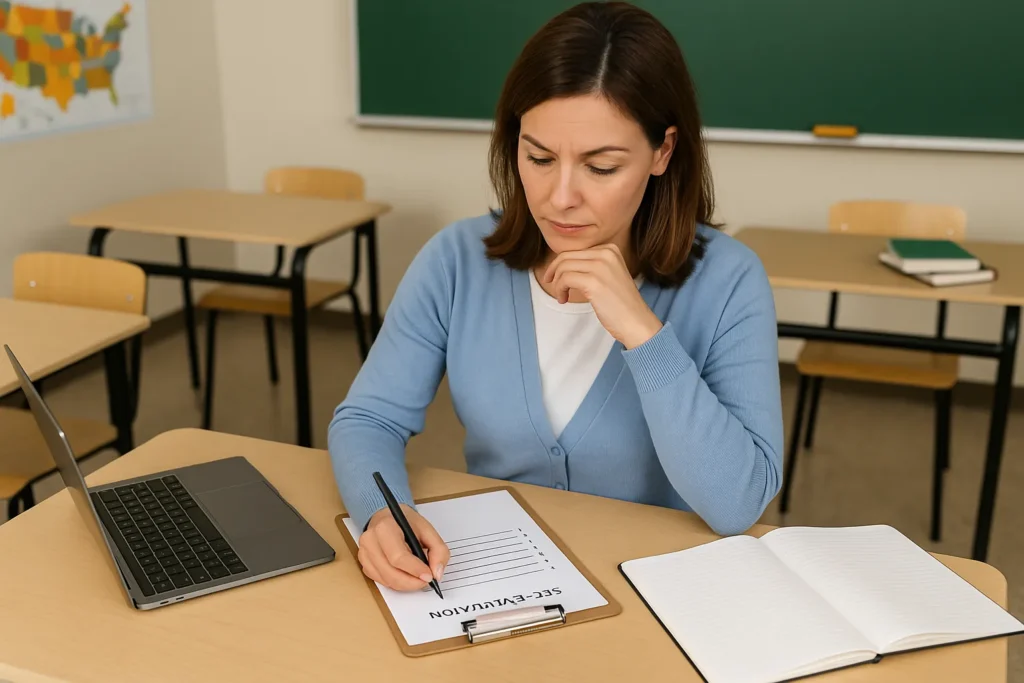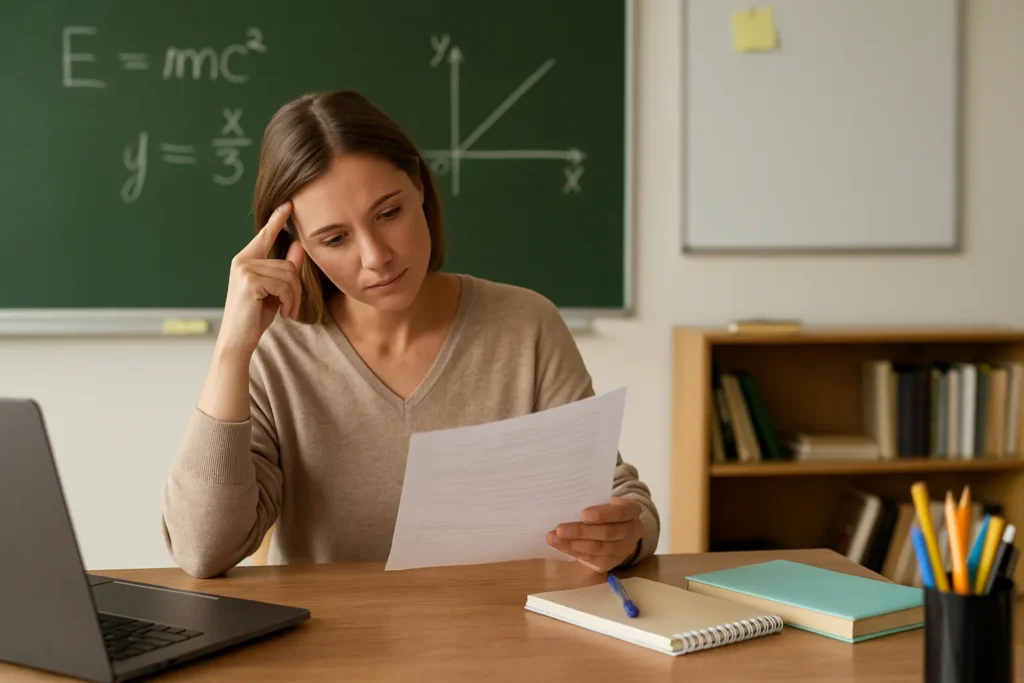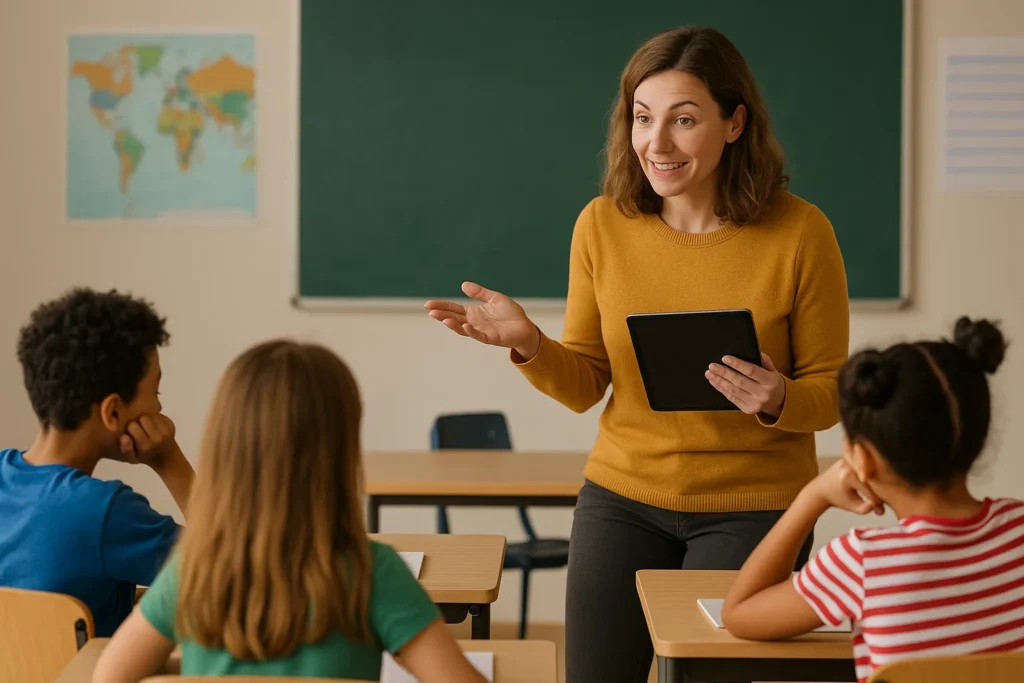Ever noticed how some teachers just seem to have it figured out? Like how their classrooms always run smoothly, students actually listen, and somehow, they’re not burned out by March.
But great teaching like that doesn’t come from working harder or staying at school until 8 PM every night. Instead, it often shows up in small, everyday moments, like noticing when a student needs extra support, adjusting a lesson in real time, or simply choosing to protect your own energy so you can show up fully the next day.
If you want to know the habits that separate good teachers from great ones, keep reading. Because this guide will show you what to notice, how to think, and which daily practices actually work.
What Are Effective Teaching Habits?
Effective teaching habits are the small, consistent actions that separate good teachers from the great ones. They’re nothing flashy or complicated, and you’ll never notice them when you walk past a classroom.
But these habits mould into how students learn and grow. For instance,
- Reflecting on Every Lesson: Great teachers always review what worked and what didn’t after class. Reflection helps educators pick up patterns in a student’s performance and engagement. Maybe you’ll start noticing things like morning lessons work better than afternoon ones.
- Pursuing Professional Development: Successful teaching requires staying updated with new ideas and strategies. Teachers who attend workshops, read research, and learn from colleagues regularly are bound to have a better understanding of teaching. Because the way we taught five years ago doesn’t always work today.

These effective teaching habits keep your teaching skills sharp throughout your career. Plus, learning new approaches makes your job feel less repetitive and boring.
Growth Mindset Affects Student Success
Your mindset as a teacher directly affects how students view their own abilities and potential. When you believe students can grow, they start believing it too.
Take a look at what a teacher’s mindset can do to a student:
- Builds Student Confidence: Teachers with a growth mindset praise hard work instead of natural intelligence. So instead of saying “you’re so smart,” you say “you worked really hard on that problem.” This approach creates a classroom where challenges feel exciting instead of scary. That’s when students start raising their hands more.
- When Lesson Plans Fail: Even well-planned lessons sometimes fall flat in the classroom. But effective teachers pivot quickly without feeling bitter or defeated by setbacks. Your flexibility shows the students that mistakes are part of the learning process.
- How Teachers Handle Failure: A growth mindset helps teachers view poor results as feedback for improvement. When half your class fails a test, you don’t just give up on them. Instead, you should think about how to teach this differently next time. Your mindset influences how you respond to constructive criticism from parents, too.
When teachers believe in their students, those students often rise to meet that belief. So a strong mindset becomes the quiet push that helps learners go further.
What Do Effective Teachers Notice That Others Miss?
Experienced educators always catch subtle cues before problems escalate. You can walk into any classroom and you’ll see a teacher at the front, teaching a lesson. But great teachers are scanning faces, reading body language, and picking up on tiny shifts that others miss.
This awareness separates okay teachers from exceptional ones. For example,
- Small Changes in Student Behavior: For a great teacher, it’s easy to spot when a student suddenly gets quiet or distracted. Maybe Sarah always participates but hasn’t spoken in three days. Or Jake keeps staring out the window instead of taking notes. A quick check-in can prevent a student from falling weeks behind.
- Energy Shifts in the Classroom: Teachers can read the room and adjust their teaching on the fly. If you notice everyone’s eyes glazing over during your lecture, that’s your cue to pause and do a quick movement activity. This awareness keeps the students alert throughout the entire school year.
- When a Student Needs Support: Offering help without embarrassing students is a great virtue. For instance, seeing a kid erasing the same answer three times, or someone nodding along but writing nothing down. This practice helps students learn that it’s okay not to understand everything right away.

Effective teachers pick up on the quiet signals on how students are really doing. That awareness lets them adjust in the moment, instead of letting a problem fester.
Teaching Practices of Successful Teachers
Now that you understand mindset and observation skills, let’s cover the daily routines that can help you get through. These are simple habits that keep you sane and effective, they’re nothing grand or complicated.
So let’s read the secrets of the ones who last decades.
Prioritizing Self-Care Without Guilt
Teaching comes with great responsibility, but if you have an empty cup, you can’t pour from it. Research published by the National Institutes of Health found that burnout prevalence among teachers ranges from 25% to 74%. That’s why taking care of your well-being makes you better for students.
Effective teachers protect personal time for rest, hobbies, and their personal lives. And that can mean saying no to extra committees sometimes, or leaving school at 4 PM without guilt.
Self-care isn’t selfish when it helps you show up energized. Because a rested teacher has more patience and creativity than one running on fumes.
Setting Boundaries With Work Hours
Great teachers plan ahead, but they don’t grade papers until midnight every night. Gallup research shows K-12 teachers have the highest burnout rate of any profession in the US, with the number standing at 44%. So, setting these limits protects your mental health and prevents feeling bitter in the long run.
We suggest you finish grading by 6 PM, and then you’re done for the day. No emails after dinner, and definitely no lesson planning on Sunday mornings. These boundaries will teach children that balance matters in life and in careers.

Staying Curious as Lifelong Learners
One habit that separates good from great is continuous learning. Lifelong learners keep up with new research, try different teaching practices, and experiment. Maybe you can test a new classroom management strategy you learned on a podcast, or you can try a math game another teacher shared.
This curiosity makes teaching feel fresh instead of repetitive each school year. When educators exemplify learning, students will see that growth never stops at graduation.
Great Teachers Focus On Relationships First
Research shows that teacher trust has a moderate to strong effect on student learning and classroom behavior. It’s real data from schools across the country. You can have the best lesson plans and the fanciest technology. But if students don’t trust you, none of it means anything.
Kids always listen to teachers they respect and trust, even at difficult grade levels. So building relationships early in the school year can prevent most behavior problems later. In the end, you spend less time dealing with disruptions and more time actually teaching.
And remember that this respect isn’t automatic, but as a teacher, you have to earn it through consistency, fairness, and understanding. Students ask better questions and stay engaged longer when they don’t want to disappoint someone who truly cares about their success.
Start Small for Successful Teaching
Now that you know what great teachers do differently, which habit will you start with?
You don’t need to overhaul everything tomorrow. You only need to pick one thing from the list we’ve mentioned. Maybe you’ll reflect on lessons for five minutes each day, or focus on noticing one student’s behavior you usually miss.
These small changes will eventually add up over the entire school year. Because the teachers who thrive aren’t doing everything perfectly. Instead, they’re just consistent with a few key habits that protect their energy and help students grow.
So, your teaching career doesn’t have to drain you. Especially when you truly strive to make the classroom a safe place. For more insights on building thriving educational environments, explore our resources at On The Culture.





